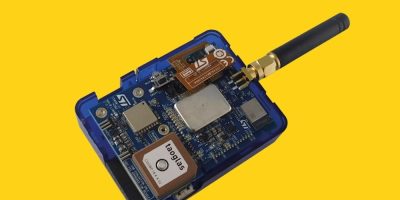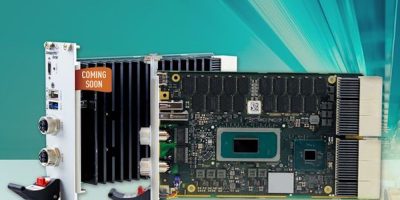To support engineers building proof of concept for asset tracking systems, STMicroelctronics offers the STEVAL-ASTRA1B multi-connectivity evaluation kit. It is battery powered, has a small form factor and includes firmware to simplify development targeted applications such as livestock monitoring, fleet management, and logistics.
The kit helps users evaluate ST’s short- and long-range STM32 wireless SoCs. The STM32WL55JC sub-GHz SoC is for long-range connectivity or low power wide area networks (LPWAN) and implements the LoRaWAN (long range WAN) protocol. It provides LoRa, (G)FSK, (G)MSK, and BPSK modulations.
The second wireless SoC is the STM32WB5MMG module for 2.4GHz Bluetooth Low Energy and Zigbee connectivity. Each SoC has an Arm Cortex-M4 core for application processing with a dedicated Cortex-M0+ to manage the radio.
The development kit also includes an ST25DV64K near field communication (NFC) contactless chip for secure pairing and communication and an STSAFE-A110 secure element for privacy and protection against hacking.
There is also a Teseo-LIV3F miniature GNSS module which provides outdoor positioning. Sensors from the company provide data for monitoring asset condition and environment. Sensors available include an STTS22H low voltage, low power temperature sensor with ±0.5 degrees C accuracy, HTS221 digital humidity and temperature sensor, the LPS22HH barometric pressure sensor, and LIS2DTW12 low power three-axis accelerometer. Also available is the LSM6DSO32X always-on inertial module, which contains a3D accelerometer and 3D gyroscope with machine-learning core.
The STEVAL-ASTRA1B has a smart power and battery management architecture that helps developers maximise application runtime, said ST. It also includes the ST1PS02 nano-quiescent synchronous step-down converter, STBC03 Li-ion battery charging controller, and TCPP01-M12 USB-C port-protection IC.
The ecosystem available for evaluating applications in development include software and tools from ST. The choice includes the FP-ATR-ASTRA1 STM32Cube software function pack with firmware libraries and typical application examples. There is also ST’s asset-tracking mobile app, available on Apple Store and Google Play. The DSH-Assetracking cloud dashboard is also available, free of charge to demonstrate an end-to-end proof of concept.
The STEVAL-ASTRA1B evaluation kit is available to order now through ST’s eStore.







